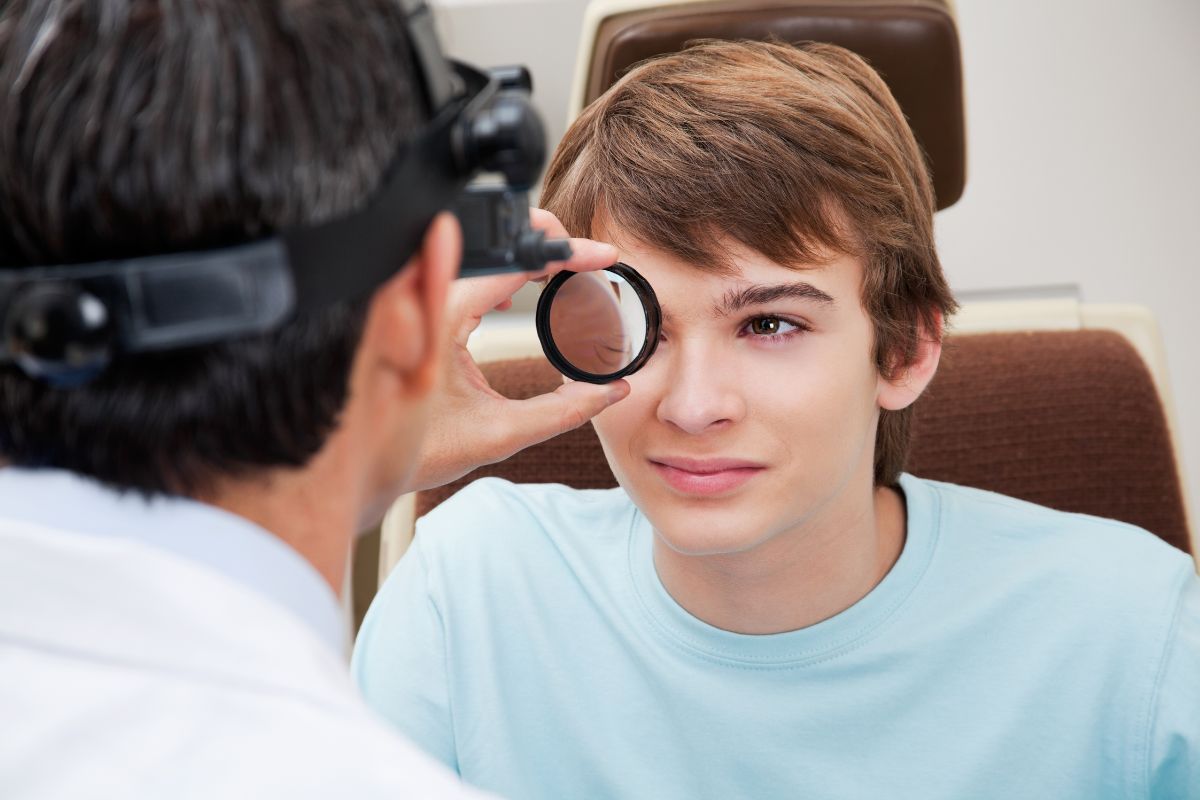Understanding Different Types of Retinal Diseases – A Simple Guide

The eyes enable us to observe the world, but certain internal eye components sometimes stop functioning properly. The retina stands as one of the eye’s crucial components. The retina functions as a light-sensitive tissue that resides at the back of the eyeball. The retina performs its function by converting light into signals, which the brain interprets to enable vision. The retina suffers damage, which results in vision problems.
In the following sections, we will provide information about retinal disorders, including what they mean and their effects. We will also cover typical signs and symptoms, and the available treatments so that you can easily recognise these and catch them early.
What Is the Retina and Why Is It Important?
The retina represents an essential component of human vision. The retina functions by transforming visual images into electrical signals, which the optic nerve transmits to the brain. The brain transforms the output from the retina to generate the visual image. A retina that is not healthy leads to vision problems that range from blurry vision to complete blindness in specific areas. People need to understand retinal diseases because proper eye care is essential.
1. Diabetic Retinopathy
The condition affects individuals who have diabetes. The retina’s small blood vessels suffer damage when blood sugar levels remain elevated for extended periods. The vessels experience leakage or swelling, which results in vision problems.
Signs:
- Blurry vision
- Seeing spots or floaters
- Trouble seeing at night
- Sudden vision loss in one or both eyes
Treatment:
- Controlling blood sugar, blood pressure, and cholesterol
- Laser treatment
- Injections in the eye
- Eye surgery (in severe cases)
2. Age-Related Macular Degeneration (AMD)
AMD mostly affects older adults. The macula is a part of the retina that helps with sharp, clear vision in the centre of your sight. In AMD, this area gets damaged over time.
There are two types of AMD:
- Dry AMD: The most common type. The tissue in the macula slowly breaks down.
- Wet AMD: New, weak blood vessels grow under the retina and leak fluid or blood.
Signs:
- Blurry or fuzzy vision
- Straight lines look wavy
- A dark or empty spot in the centre of vision
Treatment:
There’s no cure, but eye vitamins may slow down dry AMD
- Injections for wet AMD
- Laser treatment in some cases
3. Retinal Detachment
The retina separates from the eye’s posterior section in this severe medical condition. The retina requires oxygen and nutrients to function properly, but loses access to these essential elements when this condition occurs. The condition leads to permanent vision loss unless treated promptly.
Signs:
- Sudden flashes of light
- Lots of floaters (tiny shapes or lines that float in your vision)
- A shadow or curtain over part of your sight
Treatment:
- Eye surgery is needed as soon as possible
- Different methods include laser, freezing, or using a bubble to push the retina back in place
4. Retinitis Pigmentosa (RP)
This is a group of rare eye diseases that people usually inherit from their family. It causes the retina to slowly break down over time. It often starts when a person is young and gets worse slowly.
Signs:
- Night blindness (trouble seeing in low light)
- Loss of side vision (tunnel vision)
- Slow loss of central vision
Treatment:
- There is no cure, but low-vision aids can help
- Regular check-ups are important
- Some people try vitamin A (only with doctor’s advice)
5. Macular Hole
The macula develops a tiny opening, which forms a macular hole. The condition primarily affects people older than sixty years of age because of natural aging processes. The eye gel contracts and creates tension on the retina, which results in a tear.
Signs:
- Blurry or distorted vision in the centre
- Trouble reading or seeing fine details
- A small blank spot in the centre of vision
Treatment:
- Surgery is usually needed to fix the hole
- The surgery has a good success rate
6. Central Serous Retinopathy (CSR)
The accumulation of fluid beneath the retina leads to swelling, which produces vision changes. The condition primarily affects one eye, while it affects men between 30 and 50 years old more frequently. Stress is a major factor.
Signs:
- Blurry or distorted vision
- A dark spot in the centre of vision
- Objects look smaller or farther away than they really are
Treatment:
- Often clears up on its own within a few months
- In some cases, laser or medicine may help
7. Retinal Vein Occlusion
A vein in the retina becomes blocked by a blood clot, which leads to this condition. The condition resembles an eye stroke because it develops unexpectedly.
There are two types:
- Central Retinal Vein Occlusion (CRVO): Affects the main vein
- Branch Retinal Vein Occlusion (BRVO): Affects smaller branches
Signs:
- Sudden blurry or missing vision
- Spots or floaters
- Eye pressure or pain (in rare cases)
Treatment:
- Injections to reduce swelling
- Laser treatment
- Managing other health issues like blood pressure and diabetes
8. Epiretinal Membrane (ERM)
The condition known as macular pucker develops into a scar, which forms a thin layer of scar tissue on the retina. The formation of scar tissue on the retina leads to retinal wrinkling and folding, which results in vision problems.
Signs:
- Blurry or distorted vision
- Straight lines may look bent
- Trouble reading small print
Treatment:
- Mild cases may not need treatment
- Surgery may be needed if vision gets worse
What Causes Retinal Problems?
There are many reasons why someone may get a retinal disease:
- Diabetes
- High blood pressure
- Aging
- Eye injuries
- Family history
- Smoking
- Poor diet
The prevention of these diseases depends on maintaining good overall well-being. Regular physical check-ups are essential for ageing people or those having diabetes, elevated blood pressure, or other chronic health issues.
How Are Retinal Diseases Diagnosed?
The eye doctor (ophthalmic surgeon) uses specialised tools to examine your eyes. The specialists conduct the following procedures:
- The physician gives eye drops to increase pupil size
- The physician uses a light source to examine the internal structures of the eye
- The physician takes photographic scans of the retina.
- The physician uses these diagnostic methods to detect the condition and select the appropriate treatment plan.
Also Read: How Many Calories Are in a Kiwi Fruit?
Final Thoughts
Retinal diseases are treatable and manageable when doctors detect them at an early stage. You should immediately seek professional help when you experience any eye symptoms, including blurriness or floaters or bright flashes of light or dark spots.
Your eyesight is very valuable. The health of your retina requires attention because it determines your future vision clarity.






